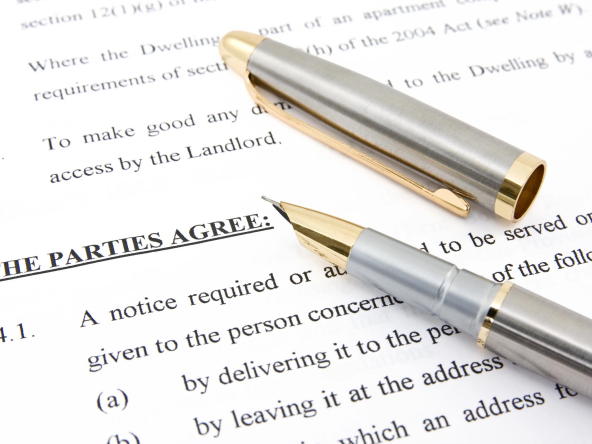When is a thousand square feet NOT a thousand feet? When you are paying for your office space! Understanding the real cost of your office lease means comparing apples to apples. The actual size of an office can vary, depending on the building and on how the landlords measure the space.
Office space is leased by the square foot, and too often, tenants go to great lengths to negotiate the best possible rate per square foot without taking into account how the square footage is determined for the particular building and the specific office space.
The Building Owners and Managers Association International (“BOMA”) has a uniform standard for measuring and leasing office space—the BOMA Standard, which has been the guide for measuring office space since 1915. Landlords are not obligated to use the BOMA standard, but most do.
The BOMA standard relies on several important definitions: “Usable Area,” “Rentable Area,” “Gross-Up Factor, R/U Factor, or Load Factor” (these 3 terms are used interchangeably), and “Base Building Circulation.”
Prior to 1996, the “Old” BOMA standard (BOMA Standard ANSI Z65.1-1980) calculated rentable area by looking at the usable area and the common area on the tenant’s floor only. It did not take into account the building’s common areas, such as main floor lobbies or mechanical penthouses.
In 1996, the standard was changed to include all areas within the building envelope – the BOMA Standard ANSI Z65.1-1996. Landlords and building owners re-measured their buildings using the new standard and proportioned out the additional space to their tenants. More than one tenant, who had a “Landlord right to re-measure the Premises” clause in their lease, was surprised to find out that overnight, their office space increased in size, and their rent was adjusted accordingly.
BOMA again revised the standard in 2010 and released Office Buildings: Standards Methods of Measurement and Calculating Rentable Area 2010 “BOMA 2010”. The new edition contains several revisions and additions to the previous BOMA 1996 standard.
The most significant change is that BOMA 2010 provides the option of selecting one of two distinct measuring methods. The two methods are known as Method A (the “legacy method”) which is the BOMA 1996 measurement, and Method B (the “Single Load factor” method), new in BOMA 2010.
Method A (legacy method) measures the building on a floor-to-floor basis and can result in some floors having a higher “load factor” than others, depending on their layout. A higher load factor on a floor makes it less “leasable” to prospective tenants.
Method B (single load factor method) allows building owners to apply the same load factor to all floors. A new definition was coined – “Base Building Circulation” and is defined as the minimum path on a multi tenant floor for access and egress to each suite. It applies to all floors regardless of their layout. All circulation areas beyond what is deemed Base Building Circulation are called Extended Circulation Areas and would be attributed to a tenant’s “Usable Area”.
Although both options are available to measure a building, only one can be applied to the building, and the lease should clearly state which method was used. The total rentable area of the building is the same regardless of whether method A or B is used.
When comparing office space, it is important to know the gross-up or load factor (see below). Rates are usually quoted on the rentable area of the office space.
On a lease transaction of 10,000 rentable square feet, a tenant paying $20.00 per rentable square foot in a building with a 10% gross up or 1.10 load factor is actually paying closer to $22.00 per usable square foot because they occupy 9,090 sq. ft. (usable space)
A tenant paying $20.00 per rentable square foot in a building with a 20% gross up or 1.20 load factor is paying ~ $24.00 per usable square foot, because they are occupying only 8,333 sq. ft.
Over the course of a five-year term, that adds up to a $100,000.00 difference. Also consider that when operating costs are part of the equation, the gap widens because they are also charged on the Rentable area of the office space.
In order to make a real “apples to apples” comparison of office space alternatives, tenants need to understand the difference between rentable and usable square footage. Tenants should also ensure that the gross-up/load Factor and measurement standard is clearly defined in the lease document and that there are no provisions to allow the landlord to re-measure the building at will.
DEFINITIONS
Usable Area is the actual square footage or space that each tenant occupies. It is the private space that houses the tenant’s staff, furniture, equipment, etc. It is measured from the office or tenant side of the common corridor walls, the middle of the partition walls separating the tenant’s space from space occupied by other tenants, and to the inside of exterior building walls or to the glass on the exterior walls. There is no deduction for columns or perimeter HVAC that may run along the outside wall. Under BOMA 2010, the Extended Circulation Area (a portion of the corridor leading to the tenant’s space) would also be calculated as Usable Area.
The rentable area of a building consists of all the space in the building except for the major vertical penetrations such as elevator shafts and fire-escape stairwells. The Rentable Area includes the office space, washrooms, electrical and mechanical rooms, janitorial rooms, elevator lobbies and public corridors. It can also include amenities such as daycare and fitness centres, conference rooms, and atriums.
Load Factor/ Gross Up Factor / R/U Ratio are generally synonymous. They all refer to the proportionate allocation of common area to a tenant’s space.
To determine the amount of Rentable Area leased by a particular tenant, a ratio must be established (the “R/U Ratio,” “Load Factor,” or “Gross-Up Factor”) so that each tenant will pay his proportionate share of all the common areas not included within each tenant’s Usable Area.
This ratio is determined by dividing the total Rentable Area by the total Usable Area:
Rentable Area ÷ Usable Area = R/U Ratio
Usable Area x R/U Ratio = Rentable Area
Gross Up (or Load) Factor = R/U Ratio – 1






